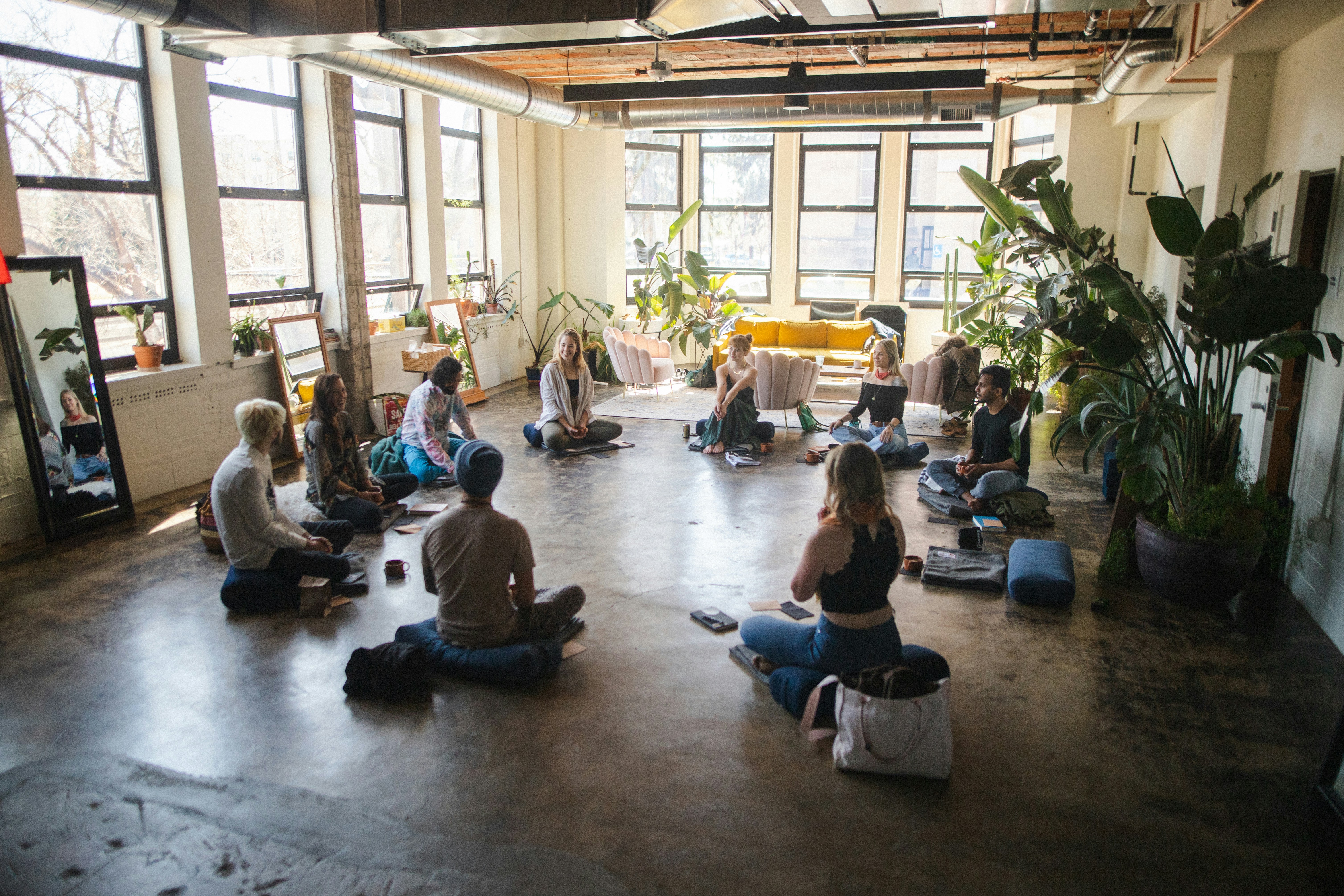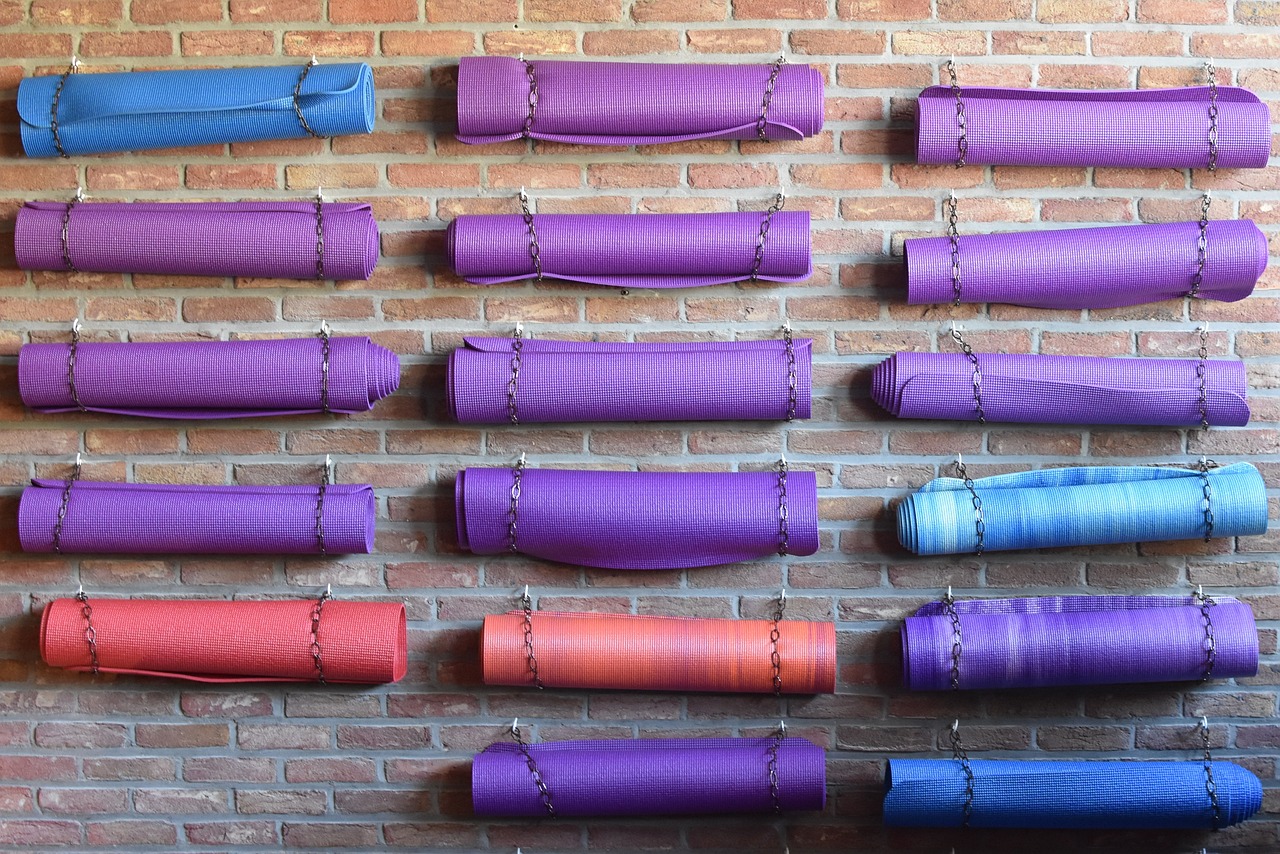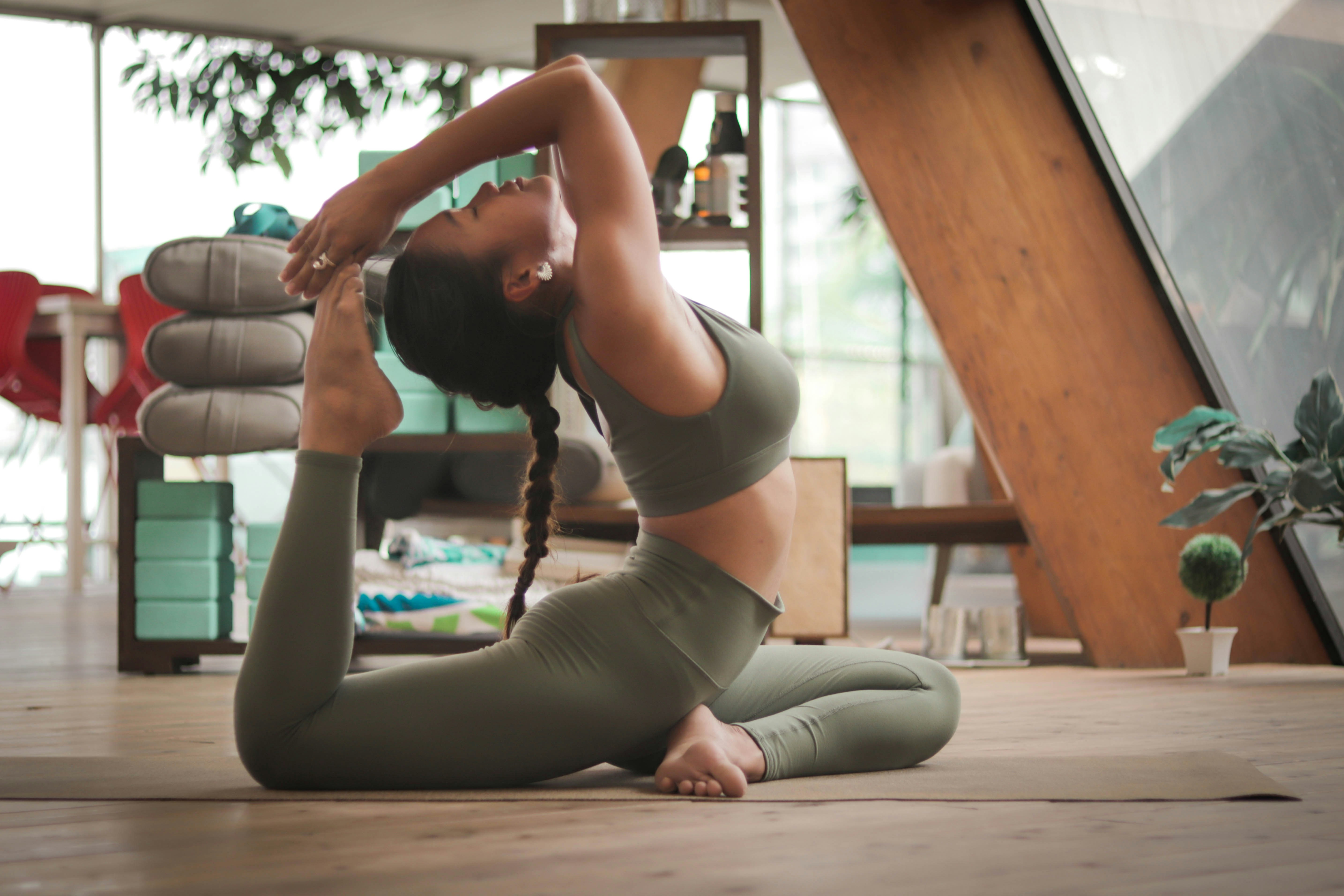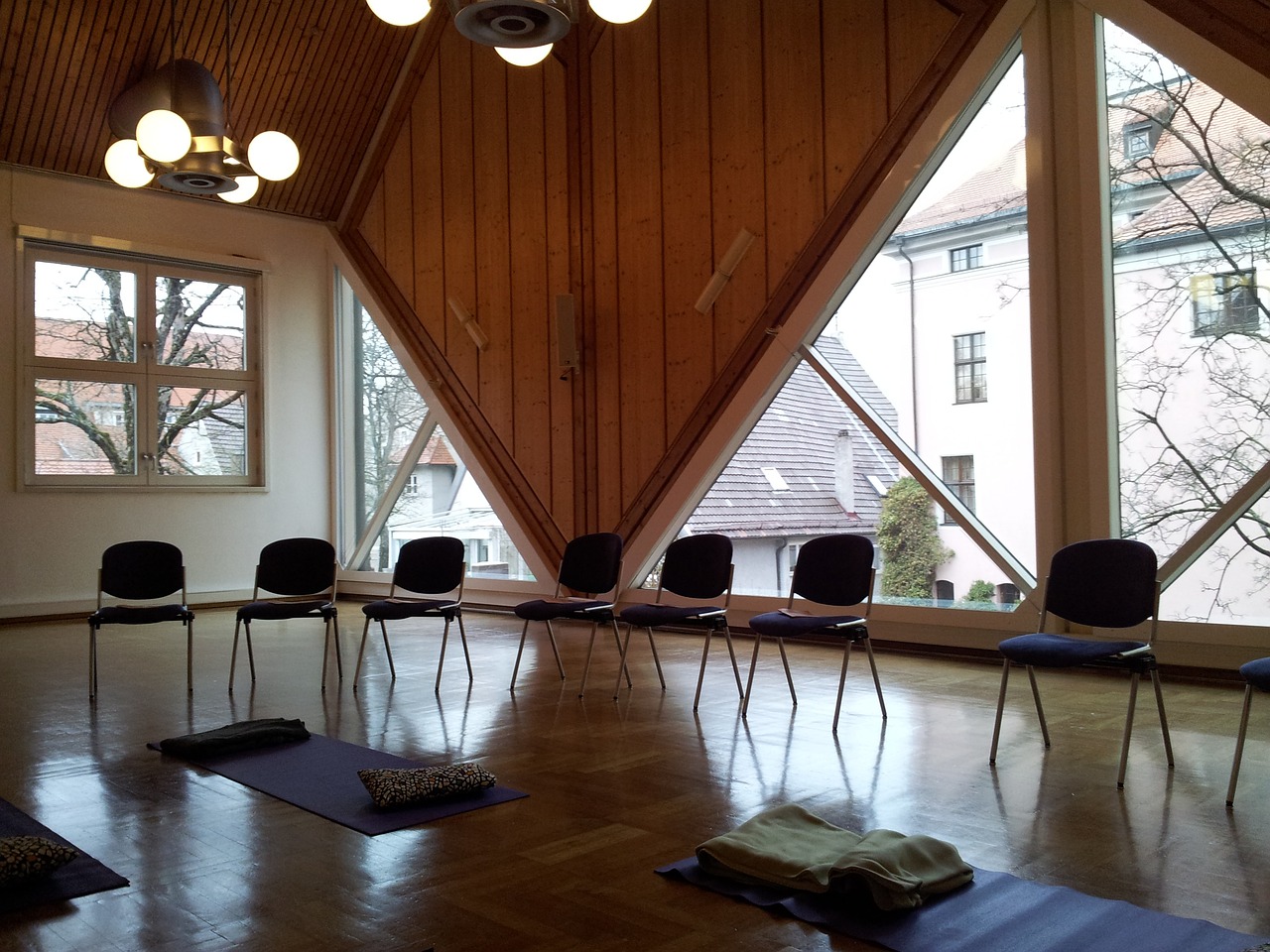12 Tips for Creating a Warm and Welcoming Atmosphere in Your Yoga Studio
A warm and welcoming yoga studio does wonders for the mind and body.
Recently, we discussed all the must-have and nice-to-have equipment you need in your new yoga studio. But, we concluded with the sentiment that not even the best equipment in the world can substitute a warm and positive atmosphere that will make people want to come back.
So, what are the most important things to consider when trying to create a positive experience for the people joining your classes?
Tip #1: Use Natural Light or Ambient Lighting
Natural light can make your yoga studio feel open and inviting, so make the most of it.
If you have windows or skylights, let the sunlight pour in. It will create a bright, uplifting space, and the warmth of the sun’s rays will literally make your studio warmer.
If natural light isn’t an option, high-quality, full-spectrum LED lights are the next best thing. They mimic daylight and are gentle on the eyes. Plus, installing dimmer switches allows you to adjust the lighting to match the mood of your classes—bright and energizing for morning flows and soft and calming for evening sessions.

Tip #2: Soundproof the Studio
Being able to concentrate and turn your attention inward is one of the most fundamental aspects of a yoga practice, whether it’s physical or spiritual. This is why soundproofing your studio is a must. External noise can be distracting and break students’ concentration.
Start by installing thick curtains or blinds to reduce outside noise and add a sense of privacy.
If your studio is on a busy street or in a densely populated urban area, acoustic panels or soundproofing foam on the walls and ceiling can significantly dampen outside noise and make the room quieter.
Carpets or area rugs also help absorb sound, which is especially useful if you have hard floors.
Tip #3: Control the Temperature
A comfortable temperature is key to a pleasant yoga practice. Nobody wants to be too hot or too cold during their session.
In the colder months, ensure your heating system keeps the studio warm and cozy to prevent discomfort and stiffness. During the warmer months, a good cooling system is essential to keep the space from becoming stuffy.
And remember: consistency is important—maintain a stable temperature to help students stay focused, relaxed, and safe! Exercising in too-high or too-low temperatures may be dangerous for some people.
The American College of Sports Medicine (ACSM) recommends keeping the temperature from 20 °C (68 °F) to 22.2 °C (72 °F) and RH (relative humidity) less than 60% for all physical activity areas. On the other hand, the International Fitness Association (IFA) recommends a temperature of around 18.3 °C (65 °F) to 20 °C (68 °F) and RH of 40%–60% for aerobic exercise, strength training, and Pilates.
Of course, this doesn’t apply to hot yoga! For hot yoga studios the temperature is typically set much higher, think 32 to 40°C (90 to 105º F) with humidity around 40%, to encourage sweating and flexibility. Some studios use infrared heating systems, which are particularly effective in the winter as they create a gentle, even heat that warms the body directly.
However, if you experience any symptoms, such as dehydration, dizziness, or headache please remove yourself from the class and go cool down in the lobby. Exercising in high temperatures, although associated with some physical benefits, can be unsafe for many people. Be careful and mindful of what your body is telling you!
Tip #4: Think About Comfort and Accessibility
A welcoming environment is one that’s inclusive, accessible, and makes us feel comfortable. For instance, making sure that people with mobility issues or wheelchairs can easily access your studio through ramps and wide doorways goes a long way in showing you care about them.
Inside the studio, provide enough space for easy movement and avoid clutter. For the practice area, offer a variety of yoga props like blocks, straps, bolsters, and blankets to accommodate different levels of flexibility and strength.
By thinking about these details, you will make your studio a place for everyone.

Tip #5: Use Aromatherapy to Relax Practitioners
Essential oils like lavender, eucalyptus, and peppermint are perfect for promoting relaxation and focus. An essential oil diffuser can gently spread these scents throughout the studio, making people feel like they’re out in nature.
However, be mindful of any allergies or scent associations your students might have. It’s a good idea to ask beforehand, but you can also include this information on your website or promotional materials to ensure that people are aware that scents will be used during class.
The right scents for the right students can help them unwind and deepen their practice. Still, because these scents are very powerful, students with sensitivities may find them very uncomfortable and distracting. Don’t overdo it.
Tip #6: Invest in Eco-Friendly Design
Eco-friendly design not only benefits the environment but also resonates well with the values of many yoga practitioners. Using sustainable materials like bamboo, reclaimed wood, and recycled materials for your studio’s interior can create a natural and soothing atmosphere that resonates with a lot of students.
These materials often come with the added benefit of being durable and aesthetically pleasing.
Additionally, implementing energy-efficient systems for heating, cooling, and lighting reduces your environmental footprint and operational costs.

Tip #7: Add Greenery and Natural Elements
Yoga is a practice that encourages practitioners to connect with nature. Therefore, if you’re able to bring small pieces of nature to your yoga studio, you’ll make yogis feel even better. And, don’t take my word for it—scientists have done research on this topic.
It turns out that interaction with indoor plants may reduce psychological and physiological stress. A room with a lot of plants promotes feelings of comfort, well-being, and connection to nature.
Indoor plants like ferns, bamboo, and succulents are also amazing air purifiers, which is yet another added benefit. Consider adding a variety of plants throughout the studio, but just be careful not to overcrowd the space.
In addition to plants, incorporating natural elements like wooden furniture, stone decorations, and water features can further enhance this earthy and natural vibe.
Tip #8: Leverage Colors
According to color psychology, being exposed to different colors can significantly affect our mood.
According to one study, the emotions that we associate with different colors are both universal and cultural. The researchers state:
Our feelings about color are often deeply personal and rooted in our own experience or culture. For example, while the color white is used in many Western countries to represent purity and innocence, it is seen as a symbol of mourning in many Eastern countries.
Opt for soothing, earthy tones like soft blues, greens, and neutrals, but don’t use too dark tones. Bright colors can energize and stimulate students so don’t mix too many high-intensity colors, as they can be distracting and even promote feelings of discomfort.

Tip #9: Add a Personal Touch
This may be the most underrated tip, but adding your personal touch to your studio can make it much more intimate and welcoming. People love it when they can see how much feeling and thought went into the making of the space, and I’m not talking about money or luxury items.
Consider decorating with items that reflect your personality or the ethos of your studio, such as inspirational quotes, art, or photos. This will create a cozy and inviting atmosphere that feels less like a commercial space and more like a home away from home.
Tip #10: Build a Community
Personal touches can also include the way you interact with your students—greet them by name, remember their preferences, and make an effort to connect with them on a personal level. This helps build a strong community and makes students feel valued and appreciated.
You can even arrange activities that foster interaction, like partner poses or group events.
In addition, create an online community through social media groups where students can share their experiences and stay in touch. Building a community ensures that your studio is more than just a place to practice yoga; it will become a place where students can share ideas, get support, and discuss topics that interest and benefit them.

Tip #11: Maintain the Air Quality
It goes without saying that the practice area needs to not only be clean but also feel fresh.
Use air purifiers to keep the air clean and free of allergens. Plants can also help purify the air, but be mindful of potential allergies. Ensure that your ventilation system is effective and provides a steady flow of fresh air.
Tip #12: Leave Room for Personal Space
Another tip that may be underrated is how the mats are arranged in a studio. Oftentimes, teachers want to maximize the number of students in their classes so it can happen that they allow more students than the space can comfortably support.
This doesn’t usually come from a negative place—it often has more to do with teachers having a hard time saying “no” and turning back students, so they end up with large groups that make the practice uncomfortable for everyone.
So, stay mindful of this. Plan ahead and arrange your mats with ample space in between to guarantee that everyone has enough room to move freely without feeling cramped. Respecting their personal space will make your students feel more at ease and able to fully engage in their practice.
Additionally, having clear pathways and uncluttered areas can help create a more open and inviting environment.
Use Humor and Positive Energy to Make People Feel at Ease
My final tip is for you: foster a positive atmosphere through your attitude.
Humor and a positive attitude are two essential ingredients in every yoga teacher’s playbook.
Don’t be afraid to laugh and share light-hearted moments with your students. Use humor to break the ice and make new students feel more comfortable.
Encourage a friendly and supportive environment where everyone feels included and appreciated. This approach along with even just a few of the suggestions above helps create a joyful and stress-free space that students will love coming back to.









